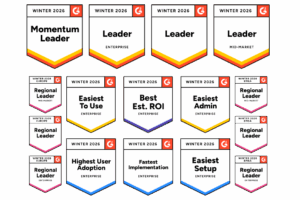Driving Accounting Excellence: How a Global Automotive Leader Standardized and Automated Financial Operations with Trintech
Case Study
Share
Key Drivers for Transformation
A global leader in the automotive industry faced the challenge of managing a highly intricate accounting structure. Over the years, the organization introduced shared service centers to centralize and optimize processes, but a hybrid operational model persisted. While many accounting functions were consolidated, a significant number of accountants remained embedded within subsidiaries, creating a decentralized yet interconnected workflow.
This hybrid model relied heavily on virtual collaboration between shared service centers and subsidiary teams, adding layers of complexity to operations. To maintain consistency, enhance visibility, and uphold quality across accounting activities, the organization recognized the need for transformative solutions.
Key challenges included:
- Hybrid Operations: The split between shared service centers and subsidiary teams resulted in inefficiencies and communication barriers, particularly in a virtual environment.
- CFO Confidence: Regional and subsidiary CFOs required improved assurance in the accuracy of accounts and the performance of shared service teams.
- Process Inefficiencies: The absence of standardized reconciliation practices, automation, and real-time reporting created gaps in visibility and hindered operational consistency.
Transforming Accounting Operations with Cadency by Trintech
Faced with the challenges of hybrid operations, CFO assurance, and process inefficiencies, the customer partnered with Trintech to simplify, standardize, and transform their accounting processes. Trintech’s Cadency Platform offered the flexibility and advanced capabilities necessary to address their unique pain points, fostering seamless collaboration, enhanced visibility, and greater control.
Tailored to Evolving Needs
- Scalable platform with modular activation – start with critical functions and expand effortlessly as needs grow.
- Delivered a targeted solution for “Certification” while offering a comprehensive, adaptable platform.
Comprehensive and Connected
- Unified platform with seamless SAP integration for real-time data transmission.
- Broke down silos by connecting shared service centers and subsidiaries into one cohesive framework.
Effortless Configuration
- Pre-built reconciliation templates enabled quick deployment and easy customization.
- Clear, standardized framework ensured consistent reconciliation rules across the organization.
- Intuitive interface allowed for rapid adoption by global teams.
Real-Time Visibility and Insights
- Instant dashboards equipped CFOs and managers with up-to-the-minute insights on progress.
- Drill-down capabilities provided transparency and direct access to detailed reconciliation data.
By leveraging Trintech’s Cadency Platform, the customer bridged operational gaps, empowered CFOs with newfound confidence, and standardized their processes to create a more connected and resilient accounting function.

Key Outcomes
The successful implementation of Cadency has demonstrated the transformative power of automation, driving efficiency, accuracy, and transparency across reconciliation processes:
Risk-Based Reconciliation
- Reconciliation frequency is now guided by each account’s risk level, fully embedded into the tool for precise and targeted focus.
Time Reallocated to Analysis
- Teams spend less time on preparation and more time analyzing and certifying accounts, enabling higher-value work.
Seamless Auditor Collaboration
- Reconciliations can be securely shared with auditors in just a few clicks, dramatically reducing time spent by accountants.
Automated Action Plan Tracking
- Reconciliation processes, including general and supporting account balances, are fully automated, eliminating manual effort.
- Action plans are tracked directly within the tool, complete with automated reminders for teams and real-time reporting for managers.
By adopting Cadency, the customer has unlocked new levels of operational excellence, enabling greater transparency, improved workflows, and more strategic use of their team’s expertise.
Future Goals
The customer is focused on expanding its automation journey to further enhance efficiency and control. The next step involves deploying Cadency Journal Entry to integrate risk-level assessments. This will streamline the evaluation of manual entries, ensuring significant controls are in place while reducing the time-intensive nature of these tasks. Additionally, the shared service center is prioritizing the harmonization of closing task lists by standardizing processes and leveraging Cadency Close for improved consistency and accountability.
Looking ahead, the organization is also exploring the potential of AI-driven solutions to unlock new levels of productivity in accounting. While the possibilities are exciting, there is a strong interest in gathering practical examples and insights to better understand AI’s impact on financial operations. These forward-looking initiatives reflect a commitment to continuous improvement and innovation.
Read the Full Case Study
Discover key insights and actionable strategies by downloading our full case study.
See Trintech in Action
Seeing is believing. Discover why Trintech is the real leader in financial close automation.


